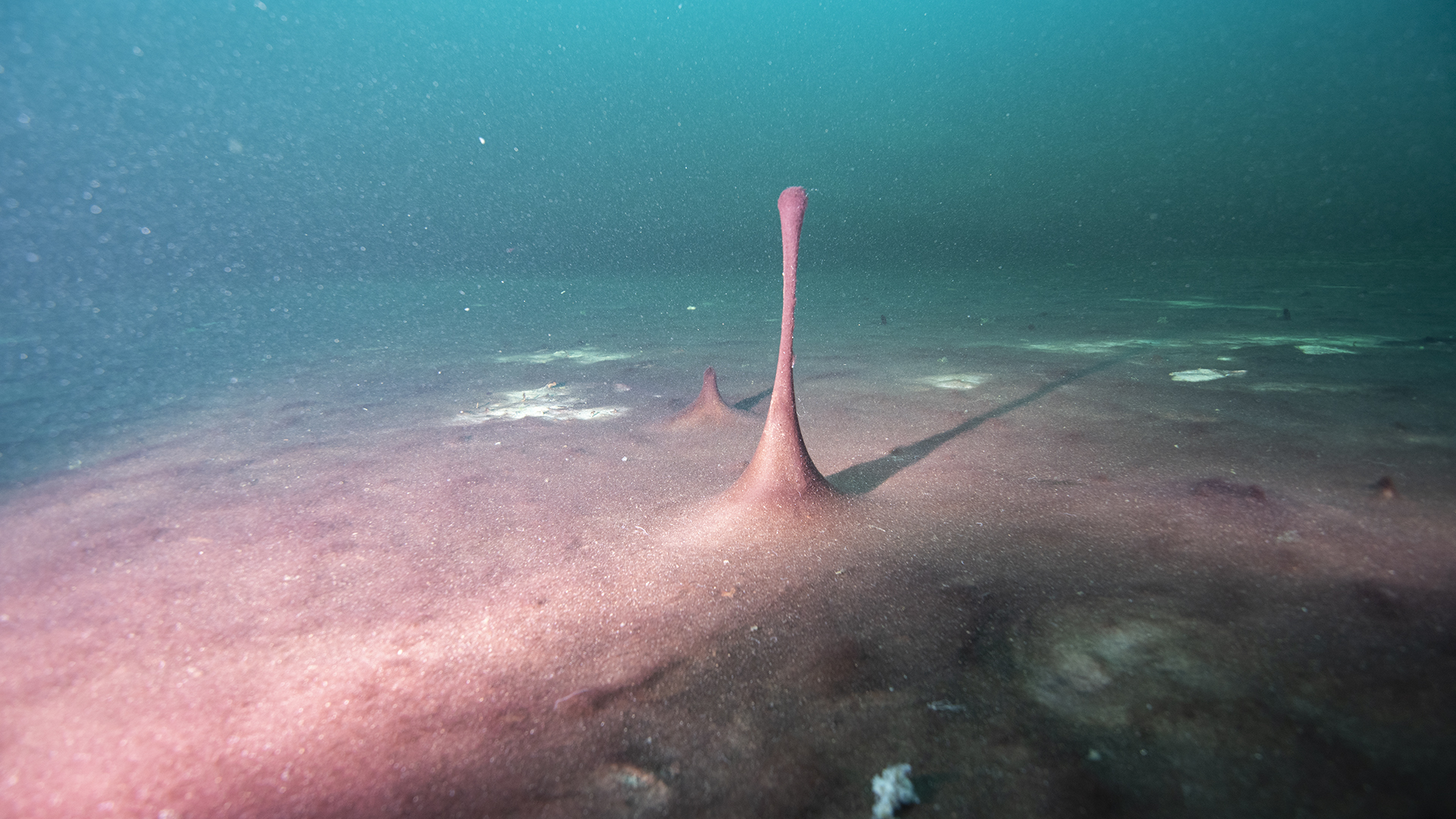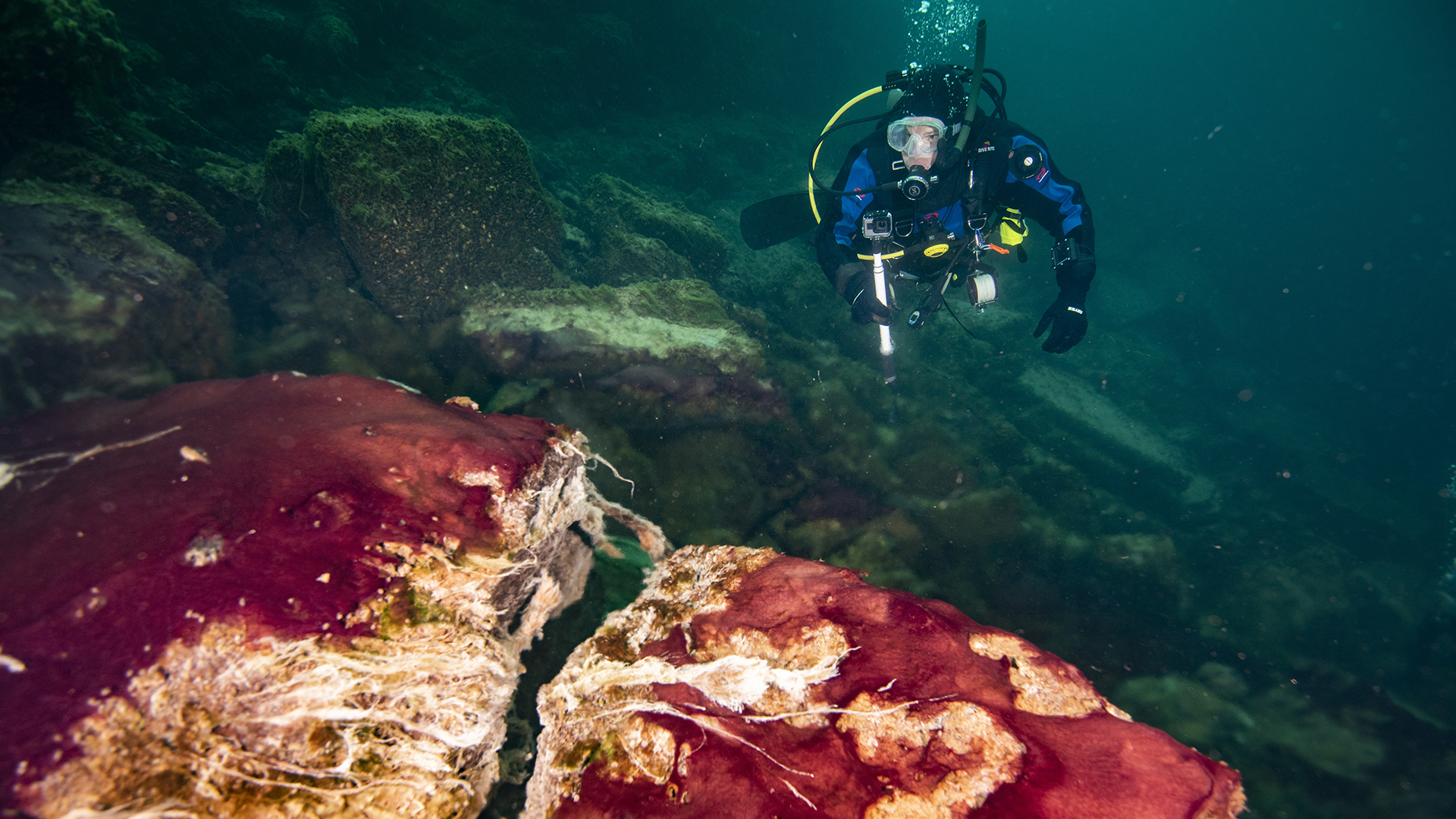Slowdown of Earth's spin caused an oxygen surge
More daylight helped oxygen escape from microbial mats.

Here's a new spin on how Earth became an oxygen-rich planet: As our planet's rotation slowed, microbes were bathed in longer stints of sunlight that revved up their release of oxygen into the atmosphere.
Every breath you take is possible because billions of years ago, dense mats of cyanobacteria — the first life on Earth — began churning out oxygen as a byproduct from photosynthesis. But scientists still didn't know for sure what triggered two transformative oxygenation events that turned Earth from a low-oxygen planet into an oxygen-rich world where complex organisms could evolve and diversify.
Now, researchers have identified an important factor that could have spurred the release of microbial-generated oxygen: slowdowns in Earth's rotation beginning about 2.4 billion years ago. Earth spun more quickly when it was a newborn planet, completing a turn in just a handful of hours, but it gradually decelerated over hundreds of millions of years. Once the length of a day reached a certain threshold — possibly during those key oxygenation periods — longer stretches of sunlight may have enabled more oxygen molecules to hop from areas of high concentration (inside the bacteria mats) to areas of lower concentration (the atmosphere), according to a new study.
Related: Earth's 8 biggest mysteries
Scientists recently found clues to this link in a sinkhole at the bottom of Lake Huron. Bordered by Michigan in the United States and by Ontario in Canada, Lake Huron is one of the biggest freshwater lakes in the world. The lake's Middle Island Sinkhole measures 300 feet (91 meters) in diameter and lies about 80 feet (24 m) below the surface. There, sulfur-rich water nourishes colorful microbes that thrive in a low-oxygen environment, much like Earth's earliest forms of bacteria did.
In the sinkhole's chilly depths live two types of microbes: sunlight-seeking purple cyanobacteria, which produce oxygen through photosynthesis, and white bacteria, which consume sulfur and instead release sulfate. The microbes jockey for position throughout the day, with the sulfur-eating bacteria covering their purple neighbors in the morning and evening hours, blocking the purple microbes' access to the sun. However, when daylight is strongest, the white microbes shun the light and migrate deeper into the sinkhole, leaving the purple cyanobacteria uncovered and thereby able to photosynthesize and release oxygen.
There might have been similar competitions between communities of microbes billions of years ago, with oxygen-producing bacteria's sunlight exposure hampered by their microbial neighbors, the researchers wrote in the study. Then, as days on Earth became longer, the oxygen-makers gained more time in the sunlight — and released more oxygen into the atmosphere.
Sign up for the Live Science daily newsletter now
Get the world’s most fascinating discoveries delivered straight to your inbox.
"We realized that there is a fundamental link between light dynamics and release of oxygen, and that link is grounded in the physics of molecular diffusion," when thermal changes cause molecules to migrate from areas of higher concentration to lower ones, said study lead author Judith Klatt, a research scientist with the Max Planck Institute for Marine Microbiology in Bremen, Germany.
"A shorter day would allow less oxygen to escape a mat, even if the same amount of oxygen is produced per hour," Klatt told Live Science in an email.

Spin cycle
Now, Earth completes a full rotation on its axis once every 24 hours, but more than 4 billion years ago, a day lasted only about six hours, the researchers reported. Over billions of years, Earth's ongoing dance with the moon has slowed the planet's rotation through a process known as tidal friction. As Earth rotates, the pull of the moon (and the sun, to a lesser extent) attracts Earth's oceans. This stretches the seas so that they bulge away from Earth's center, siphoning energy away from the spin and slowing it down, said study co-author Brian Arbic, a professor in the Earth and Environmental Sciences department at the University of Michigan's College of Literature, Science and the Arts.
This deceleration is small, but it added up to hours of additional daylight over hundreds of millions of years; and the slowdown is still going on today, Arbic told Live Science in an email.
"Tidal friction continues to slow down the rotation rate — the days will continue to lengthen over geological time," Arbic said.

Breath of fresh air
The researchers modeled scenarios that varied day length and oxygen escape from microbial mats. When they compared their models with an analysis of the competing microbial mats sampled from the Middle Island Sinkhole, they found confirmation of their predictions: Photosynthesizing bacteria released more oxygen when days were longer.
This wasn't because the microbes photosynthesized more; rather, it was because longer periods of sunlight meant that more oxygen escaped from the mats in a single day, said study co-author Arjun Chennu, a research scientist at the Leibniz Centre for Tropical Marine Research in Bremen.
"This subtle uncoupling of oxygen release from sunlight is at the heart of the mechanism," Chennu said in a statement.
Earth's atmosphere took shape after the planet formed and cooled, around 4.6 billion years ago, and was mostly made of hydrogen sulfide, methane and carbon dioxide (CO2) — as much as 200 times the amount of CO2 as there is in the atmosphere today, according to the Smithsonian Environmental Research Center.
That all changed following the Great Oxidation Event (GOE) about 2.4 billion years ago, followed by the Neoproterozoic Oxygenation Event about 2 billion years later, bringing atmospheric oxygen up to the present-day level of about 21%. Those two oxygenation events have previously been linked to the activity of photosynthesizing cyanobacteria, and this new evidence suggests that another factor could have been daytime on Earth — "a previously largely unconsidered factor" — becoming long enough to trigger the release of even more oxygen from microbial mats, working "in parallel with the other previously suggested drivers of oxygenation," Klatt said.
The findings were published on Aug. 2 in the journal Nature Geoscience.
Originally published on Live Science.

Mindy Weisberger is an editor at Scholastic and a former Live Science channel editor and senior writer. She has reported on general science, covering climate change, paleontology, biology and space. Mindy studied film at Columbia University; prior to Live Science she produced, wrote and directed media for the American Museum of Natural History in New York City. Her videos about dinosaurs, astrophysics, biodiversity and evolution appear in museums and science centers worldwide, earning awards such as the CINE Golden Eagle and the Communicator Award of Excellence. Her writing has also appeared in Scientific American, The Washington Post and How It Works Magazine. Her book "Rise of the Zombie Bugs: The Surprising Science of Parasitic Mind Control" will be published in spring 2025 by Johns Hopkins University Press.









